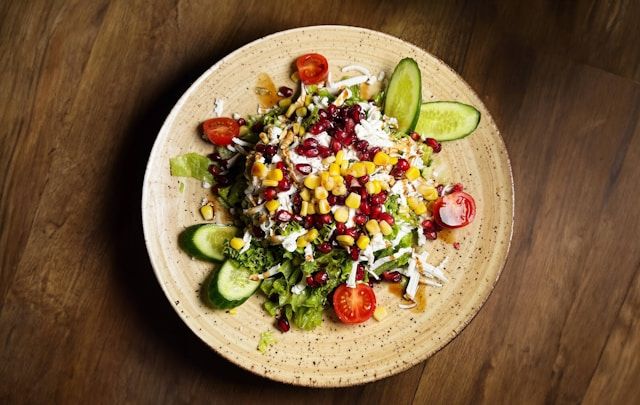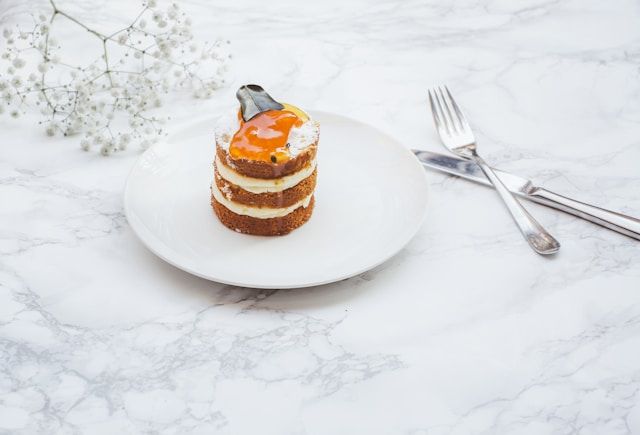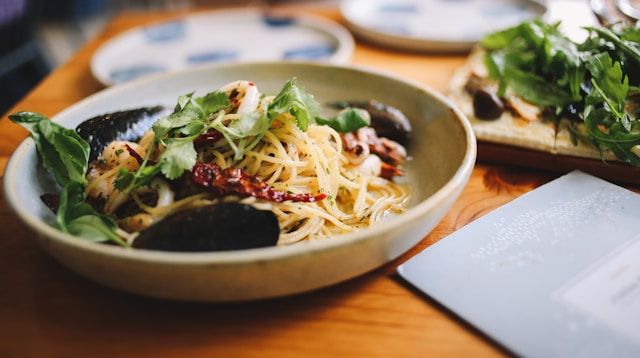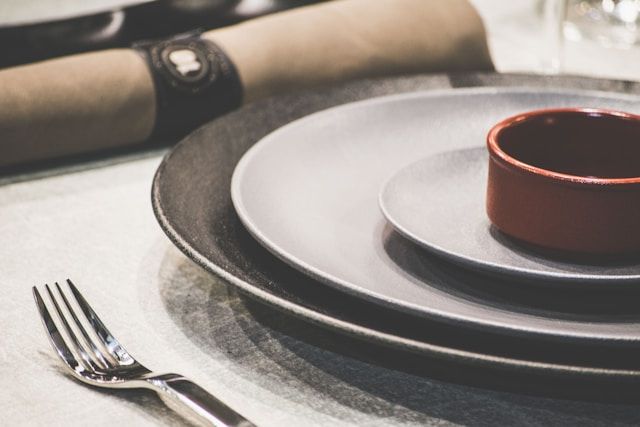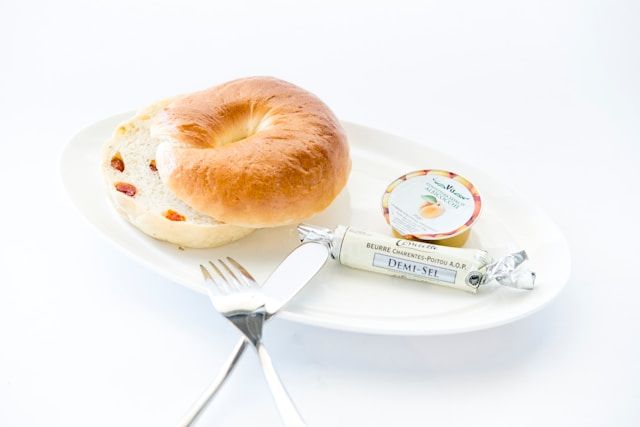
Send Inquiry
Different Plates: What They're For
When setting a table, the type of plate you choose can significantly impact the dining experience. Different plates, like dinner plates and dessert plates, have specific purposes. Understanding the different types of plates and their specific uses can help you create an aesthetically pleasing and functional table setting. Here's a comprehensive guide to the various plates and what they're used for.
Plate Sizes and Shapes
Different Plates and Their Uses
Different types of plates have specific purposes in dining. For example, dinner plates, salad plates, dessert plates, and appetizer plates each serve a unique function.
Dinner Plate
Dinner plates are typically the largest plates in a set of dishes and are used for serving the main course during a meal. They are designed to hold a generous portion of food and are often the focal point of the place setting. The standard size of a dinner plate is usually around 10 to 12 inches in diameter. Dinner plates come in various shapes and sizes, but they are usually round and have a wide rim to prevent food from spilling over.
Salad Plate
Salad plates are smaller than dinner plates and are specifically designed for serving salads, usually measure 7-9 inches. They are typically used before the main course and are meant to hold a moderate portion of salad. Unlike dinner plates for main courses or dessert plates for sweets, salad plates are designed to present salads in an appealing way. These plates are often more decorative than dinner plates, with intricate designs or patterns to enhance the presentation of the salad.
Dessert Plate
Dessert plates are even smaller, often 6-8 inches in diameter. This helps control portion sizes and present desserts nicely.
They can be round or square, suitable for cakes, pastries, or fruit servings. Unlike dinner plates for main courses, dessert plates highlight dessert art. Their small size and decorative design make them great for visually pleasing desserts. They add elegance to the table setting.
In restaurants or at home, dessert plates enhance the meal's look. They complement the effort in making desserts. Whether serving colorful macarons or rich chocolate lava cakes, dessert plates are perfect for showing and enjoying sweets.
Appetizer Plate
Appetizer plates, typically around 6-8 inches, are used for small portions of food served before the main meal. They can be square or rectangular to add creativity to the table setting. Unlike dinner plates for main courses, appetizer plates are for finger foods like cheese or bread. They showcase these small bites in a visually appealing way before the main course.
Their smaller size makes them perfect for buffet-style eating. Guests can easily pick up these appetizers with fingers or a small spoon. Design and material vary, from ceramic to glass or bone china, allowing for different styles in dining.
Luncheon Plate
Luncheon plates are smaller than dinner plates but bigger than salad or dessert plates, usually about 9 inches. They are usually round or oval.
Luncheon plates are great for serving lunchtime meals, unlike dinner plates meant for main courses. These plates offer a versatile option for mid-day dining. They're ideal for lighter main courses like pasta or salads, making them practical for lunch settings.
These plates are designed to present food well and improve the dining experience. Their materials, colors, and designs add style to the table setting, whether at a restaurant or home. They strike a balance between form and function, making them perfect for enhancing the dining experience.
Charger Plate
Charger plates, also known as service plates, are large, decorative plates used as a base setting during formal meals. They are not meant for direct food contact but serve as a stylish backdrop for other plates.
These plates are decorative plates that add a stylish touch to a table setting. They go under dinner plates, making the meal look more appealing.
For a formal table, charger plates are placed at the center of each setting, below the dinner plate. This makes the table setting look more elegant. These plates are usually made of porcelain, bone china, or ceramic, giving the table a classy feel.
Using charger plates lets people show off their creative side and attention to detail. It doesn't just match the other plates but also lifts the dining area's vibe.
Bread and Butter Plates
Bread and butter plates are for holding bread alongside the main course in a formal setting, typically 5-7 inches in diameter. They are smaller and rounder than dinner plates.
These plates go above the dinner plate on the left side with a butter knife. Their design can enhance the dining experience. The size of the plate makes it easy to place bread, creating a visually appealing table setting.
Plates can be made from materials like porcelain, bone china, or ceramic, offering different styles to suit any dining setting.
Plate Materials
Porcelain vs. Bone China
Porcelain and bone china are popular materials for plates, each with its unique characteristics. Porcelain is durable, chip-resistant, and can be used in the microwave and dishwasher. Bone china, while also durable, is lighter and has a more delicate appearance due to the addition of bone ash. Both materials are ideal for formal occasions, but bone china often has a higher price tag.
Read more: New Bone China vs Fine Bone China: Which is Right for You?
Choosing the Right Plate Material for the Occasion
When choosing plates for a formal dinner party, it's important to consider materials like porcelain, bone china, or ceramic. These add elegance and sophistication to the dining experience.
Porcelain and bone china both have their own distinct qualities that make them suitable for different occasions. Porcelain plates are often favored for their timeless beauty and delicate nature, making them ideal for formal dinners and fine dining experiences. The fine texture and elegant appearance of porcelain create a refined atmosphere, elevating the dining experience to a whole new level.
On the contrary, bone china offers a more versatile option that can be used for both casual and formal occasions. Its strength and durability make it resistant to chipping and breaking, making it a practical choice for everyday use. Additionally, bone china's unique composition gives it a subtle translucency that adds a touch of elegance to any table setting, making it a popular choice for special events and celebrations.
How to Choose the Right Plates for You?
Choosing the right plate might seem like a simple task, but with so many options available, it can be a bit overwhelming. The right plate can enhance your dining experience, fit your lifestyle, and match your personal style. Here's a guide to help you select the perfect plates for your needs.
Plate Size and Shape
When it comes to plate size and shape, consider the types of meals you typically serve. Standard dinner plates, usually around 10-12 inches, are versatile and ideal for main courses. If you prefer larger portions or often serve meals with multiple side dishes, consider plates on the larger end of this spectrum. Smaller plates, like salad or dessert plates, are useful for specific courses. Salad plates (7-9 inches) are great for appetizers or salads, while dessert plates (6-8 inches) are perfect for sweet treats. Having a variety of sizes ensures you can present each course appropriately.
Dining Style
Your dining style plays a crucial role in determining the type of plates you need. For everyday meals, durability and practicality are key. Plates that can withstand daily use, frequent washing, and potential drops are essential. Look for materials like porcelain or stoneware, which are sturdy and often dishwasher and microwave safe. For formal dinners or special occasions, opt for elegant and sophisticated plates. Bone china or fine porcelain are excellent choices. These materials offer a refined look and are perfect for impressing your guests, though they may require more careful handling.
Plate Materials
The material of your plates not only affects their appearance but also their durability and maintenance. Porcelain is lightweight, durable, and often more affordable, making it ideal for everyday use and casual settings. Stoneware is heavier and offers a more rustic appearance, great for a homely, casual vibe. Bone china, known for its delicate look and high strength, is more expensive but adds an elegant touch to formal dining. If sustainability is important to you, consider eco-friendly materials like bamboo or recycled glass.
Plate Design and Aesthetics
The design and aesthetics of your plates should complement your kitchen or dining room decor. Neutral colors like white, beige, or gray are versatile and timeless. If you want to add some personality, look for plates with subtle patterns or accents that match your style. Consider having a set of plates for special seasons or themes. Holiday-themed plates or vibrant summer sets can add a festive touch to your meals. Matching your plates to your decor can create a cohesive and stylish dining experience.
Practical Considerations
Practical considerations such as storage space and ease of cleaning are also important. Ensure you have enough storage space for your plates, especially if you opt for larger plates or multiple sets. Stackable options can help save space. Dishwasher-safe plates can save time and effort, especially if you have a busy lifestyle. Check the manufacturer's recommendations to ensure your plates can withstand frequent dishwashing. The weight and feel of a plate can significantly affect your dining experience. Some people prefer lightweight plates for ease of handling, while others like the heft of heavier plates.
Budget
Your budget will also play a role in your decision. If you're on a budget, there are plenty of durable and stylish options available. Melamine plates, for example, are inexpensive, durable, and come in a variety of designs. For those willing to invest more, high-quality bone china or designer plates can be a worthy splurge, offering durability and style for years to come. Balance your budget with your needs and preferences to find the perfect set.
Plate Etiquette
Proper Placement of Charger Plates in Table Setting
Charger plates help make a fancy dining experience even more special. They go under dinner plates and add a nice touch to the table setting. Using fancy materials like bone china or porcelain can make the table setting look even fancier. Charger plates come in different designs and colors that can match the dining area's style. They can also be used to serve different dishes, making the dining experience more sophisticated.
Switching Out Plates at a Formal Dinner
Transitioning plates at a formal dinner is all about good manners and making sure everyone has a pleasant meal.
When a course is finished, the server should discreetly remove the used plate using tools like tongs. Then, they place the new plate for the next course in front of the diner.
This keeps the table neat and lets everyone enjoy their food without interruptions.
Modern trends in plate switching include using artistic designs and different colors to make the meal look even better. Trying out unique materials like bone china can also make the table setting more elegant.
By following traditional etiquette for plate switching and adding a modern twist with creative styles, the dining experience becomes more visually appealing and blends the best of both old and new ways of dining.

